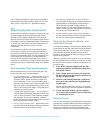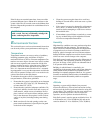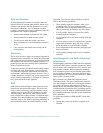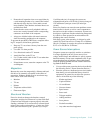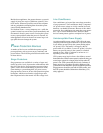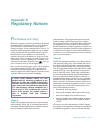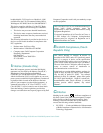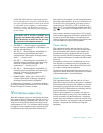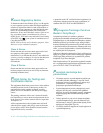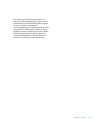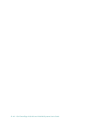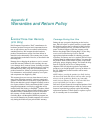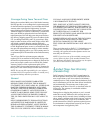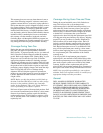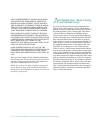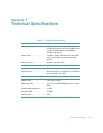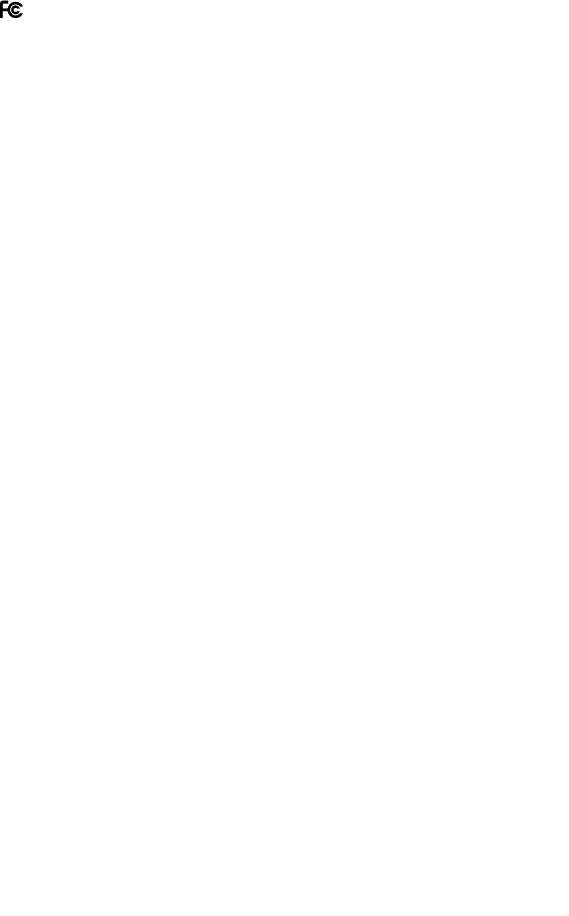
D-140 Dell PowerEdge 2100/180 and 2100/200 Systems User’s Guide
Korean Regulatory Notice
To determine which classification (Class A or B) applies
to your computer system (or other Dell digital apparatus),
examine all registration labels located on the bottom or
back panel of your computer (or other Dell digital appa-
ratus), on card-mounting brackets, and on the cards
themselves. If any one of the labels carries a Class A rat-
ing, your entire system is considered to be a Class A
digital device. If all labels carry either the Class B rating
or the FCC logo (), your system is considered to be a
Class B digital device.
NOTE: Class A devices are for business purposes. Class
B devices are for nonbusiness purposes.
Class A Device
Please note that this device has been approved for busi-
ness purposes with regard to electromagnetic
interference. If you find that this device is not suitable for
your use, you may exchange it for a device that has been
approved for use in residential as well as business
environments.
Class B Device
Please note that this device has been approved for non-
business purposes and may be used in any environment,
including residential areas.
Polish Center for Testing and
Certification Notice
The equipment should draw power from a socket with an
attached protection circuit (a three-prong socket). All
equipment that works together (computer, monitor,
printer, and so on) should have the same power supply
source.
The phasing conductor of the room’s electrical installa-
tion should have a reserve short-circuit protection device
in the form of a fuse with a nominal value no larger than
10 amperes (A).
All the equipment that works together must switch off
when the power supply cable plug is removed from the
power supply socket, which should be located near the
equipment and easily accessible.
A protection mark “B” confirms that the equipment is in
compliance with the protection usage requirements of
standards PN-93/T-42107 and PN-89/E-06251.
Wymagania Polskiego Centrum
Badañ i Certyfikacji
Urz¹dzenie powinno byæ zasilane z gniazda z
przy³¹czonym obwodem ochronnym (gniazdo z ko³kiem).
Wspó³pracuj¹ce ze sob¹ urz¹dzenia (komputer, monitor,
drukarka) powinny byæ zasilane z tego samego Ÿród³a.
Instalacja elektryczna pomieszczenia powinna zawieraæ
w przewodzie fazowym rezerwow¹ ochronê przed zwar-
ciami, w postaci bezpiecznika o wartoœci znamionowej
nie wiêkszej ni¿ 10A (amperów).
Ca³kowite od³¹czenie urz¹dzenia od sieci zasilaj¹cej nas-
têpuje po wyjêciu wtyczki sznura zasilaj¹cego z gniazda
sieciowego, które powinno byæ usytuowane w pobli¿u
urz¹dzenia i byæ ³atwo dostêpne.
Znak bezpieczeñstwa "B" potwierdza zgodnoœæ urz¹dze-
nia z wymaganiami bezpieczeñstwa u¿ytkowania zawar-
tymi w PN-93/T-42107 i PN-89/E-06251.
Pozosta³e instrukcje bez
pieczeñstwa
• Nie nale¿y u¿ywaæ wtyczek adapterowych lub usu-
waæ ko³ka obwodu ochronnego z wtyczki. Je¿eli
konieczne jest u¿ycie przed³u¿acza to nale¿y u¿yæ
przed³u¿acza 3-¿y³owego z prawid³owo
po³¹czonym przewodem ochronnym.
• System komputerowy nale¿y zabezpieczyæ przed
nag³ymi, chwilowymi wzrostami lub spadkami
napiêcia, u¿ywaj¹c eliminatora przepiêæ, urz¹dzenia
dopasowuj¹cego lub bezzak³óceniowego Ÿród³a
zasilania.
• Nale¿y upewniæ siê, aby nic nie le¿a³o na kablach
systemu komputerowego, oraz aby kable nie by³y
umieszczone w miejscu, gdzie mo¿na by³oby na nie
nadeptywaæ lub potykaæ siê o nie.
• Nie nale¿y rozlewaæ napojów ani innych p³ynów na
system komputerowy.



